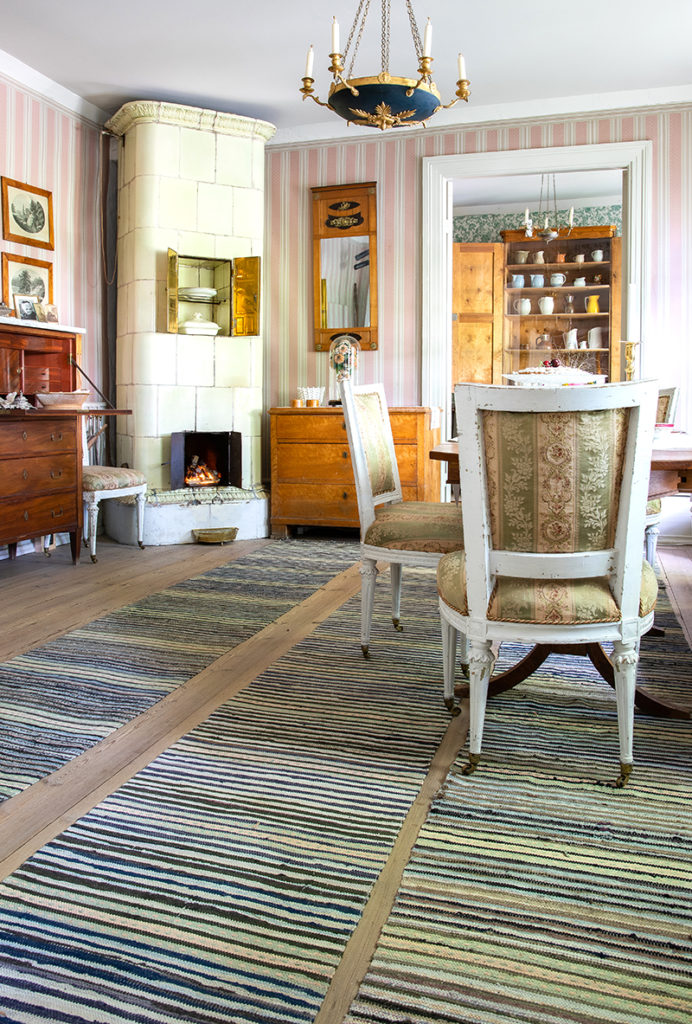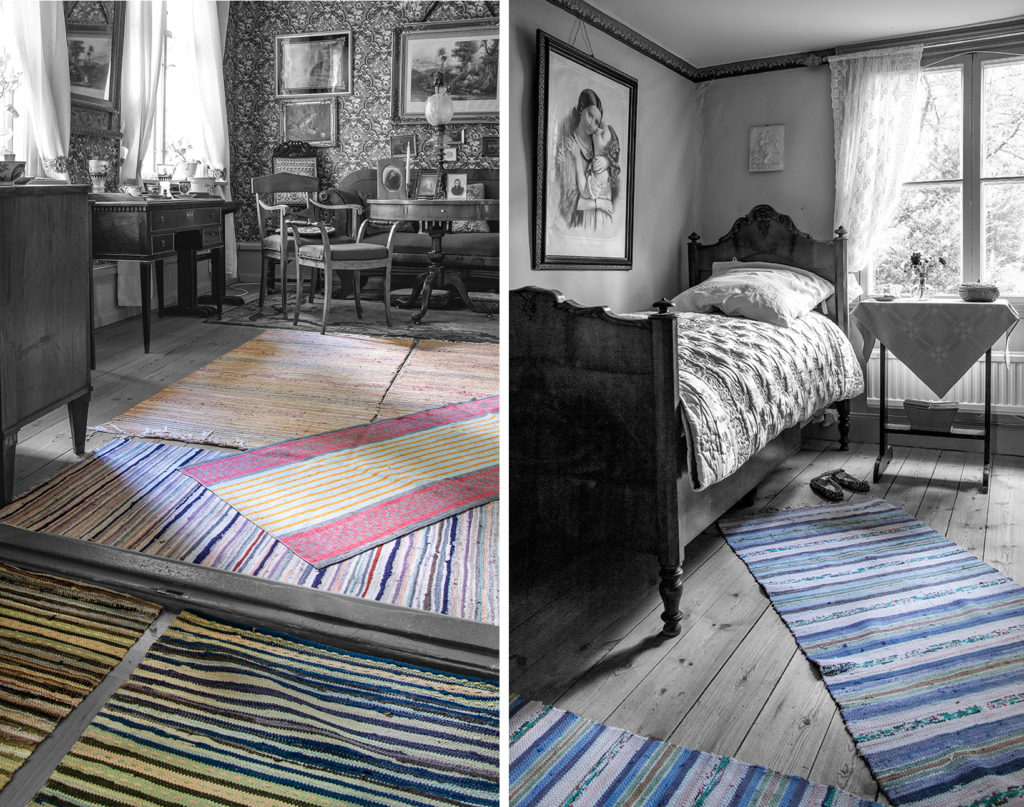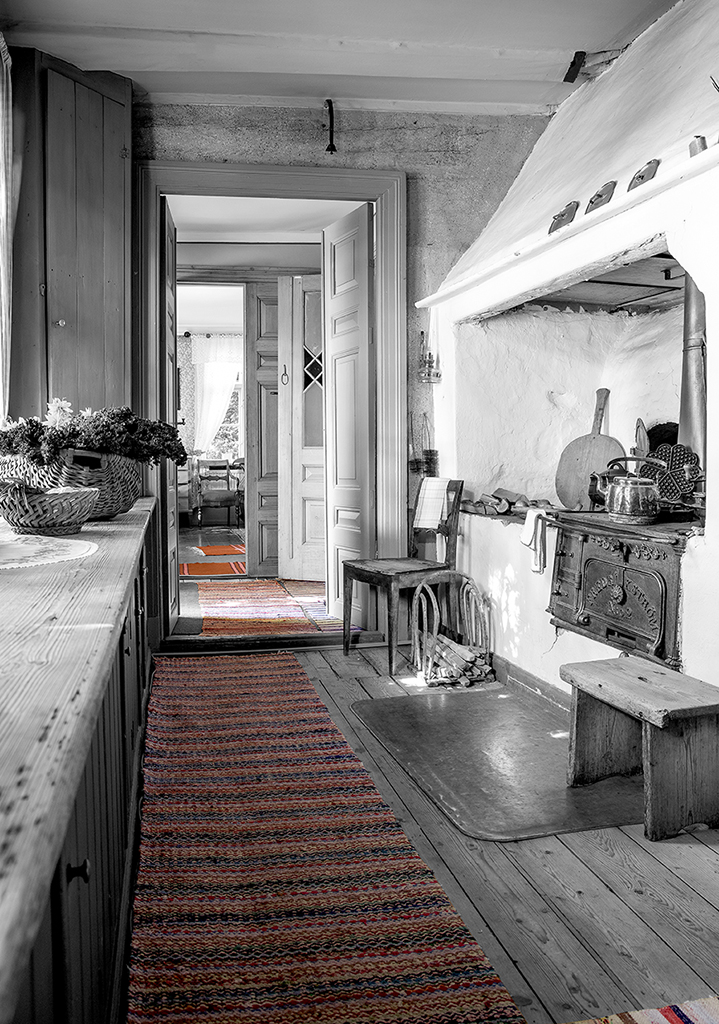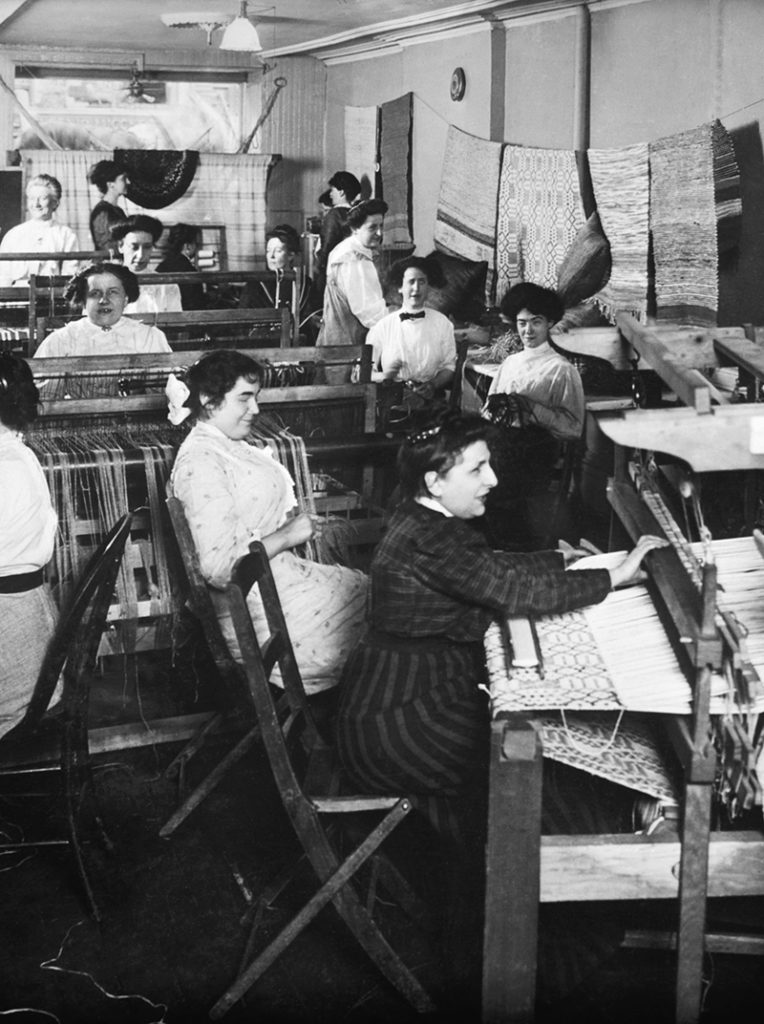The history of the Swedish Rag Rug
Fancy Home Decorating
The traditional Swedish rag rug has become a symbol of good, simple, down-to-earth, country-style living. When thinking of rag rugs, one picture old cottages or farmhouses with whitewashed floorboards, adorned with long rag rugs, striped in cheerful colors.
Picture the stories of Astrid Lindgren – Emil in Lönneberga, Madicken, Pippi Longstocking – or the famous artist Carl Larsson and his wife Karin, who were super-mega-influencers in Sweden back in the late 1800s.

However, this is not how it all started. Rag rugs are traditionally woven from recycled cloth. But traveling back in time to the turn of the century, between the late 1700s to early 1800s, all cloth was handmade! A very time-consuming labor. Cloth was precious. A good and frugal housewife would treat all textiles in the household with utmost care and clothing was mended, passed on, and altered until they were worn out. Even then, nothing that could be used again would be thrown away. They’d be turned into patches for mending or used for quilts.
This applied to all social classes. In those days, paper was still made from rags of cotton and linen. That also meant worn clothing and other textiles from households. ”Cloth merchants” traveled the Swedish countryside, buying discarded textiles that they passed on and sold again to the paper industry. It proved hard though, as people preferred to hold on to their clothes and textiles until they were worn to threads. There was even a law introduced, stating that each household had to contribute a certain amount of rags for paper production. A receipt for sold cloth would be rewarded with a tax deduction. That didn’t help much, as people would insist on saving every precious piece of cloth.
In this perspective, you might understand what an unthinkable luxury and disrespectful foolishness it would seem to common people, to put the valuable textiles on the floor and WALK on them! The use of rugs was a fashion introduced by wealthy Swedes who were fortunate enough to have traveled the continent.
The rag rug first appeared in manors and other prestigious estates. This symbol of status and wealth then slowly made its way to well-off country farmers, merchants, and priests. They had large rooms that were used only for socializing or spaces that would be festively decorated for holidays and for receiving guests.
Humble conditions and small spaces
In the middle of the 1800s, the dwelling for common folks could at best times, be a small cottage where most of the year, the family would have to spend all their time gathered in a room where they would cook, eat, wash the dishes (and occasionally themselves), sleep, and do indoor chores. Not all cottages would even have wooden floors. If very primitive, the floor would just be stamped clay. It was unthinkable to lay out rag rugs made of precious cloth in this, most likely not-so-clean, environment.
However, in the middle of the 1800s big changes were set in motion. The start of industrialization not only meant improved living standards but also made goods accessible and more affordable – also textiles!
When the fashion of rag rugs slowly started to spread, they were exclusively meant for the nicest rooms and many times not even for every-day-use. They would be rolled out for the holidays or possibly for Sundays when there would be no messy work indoors. Young girls and women working in large or wealthy households surely noticed how nice and fashionable it looked with rag rugs. Hoping and dreaming, that someday they might also be able to afford maybe a small piece of such luxury in her future home.


With improved living standards in the second half of the 1800s, by and by, families would get larger living quarters. If lucky, you might have an extra room – a space that you did not have to use for everyday life. A space for special, social occasions. That’s when the fashion of the rag rug started to spread among more common people. The rag rug was a popular decoration that would brighten up the family’s nicest room.
By the 1880s, rag rugs had become commonplace in every home in Sweden. In winter, rag rugs on the floor would protect from cold drafts. The best thing was if the rugs could be laid side by side with just a little space between them. This meant cleaning could be minimized since you would only have to scrub the surface that wasn’t protected by the rugs.
The skilled crafters
The art of weaving was traditionally a skill passed on from mother to daughter. A sought-after skill, as a skilled weaveress could generate an extra source of income for the household. Tricks and designs were guarded and a weaveress that had a good eye for composing nice designs would be much admired. In the latter part of the 1800s, the knowledge of how to weave also spread, as there would be classes arranged and books with patterns and inspirations for different weaves. Weaving rag rugs became popular since the actual weaving was easier to master with rugs than that of fine linen weaves.
There are many stages in the weaving process before you can actually start weaving: first the warping, then the dressing of the loom. This includes beaming, winding on, threading the heddles, sleying the reed, tying on to the front tie-on bar, and tying up the treadles. Not to forget all the strips of cloth that have to be cut or ripped, if you’re about to weave rag rugs.
Ready to weave! This is the creative and fun work, composing patterns when mixing and matching different cloths and colors, trying to make the most beautiful rug imaginable.
A housewife who worked quickly and skillfully could weave both for personal use and for resale. Even young children, the elderly, and women who did not know how to weave could obtain a little extra income by cutting cloth into the strips necessary for weaving rugs.

Today
Rag rugs are a classic! It’s never really been “out of fashion” but its popularity is increasing. Weither we look back and try to capture a bit of that down-to-earth simplicity from past times or maybe because we’re quite modern, eager to live a sustainable life. But the skill of this craft is not as commonly known anymore. Even if there is a slight rise of weaving interest among the young, there aren’t that many of the old skillful weavers around to pass the knowledge on and not many that are prepared to put all the time and effort in, that a rag rug requires. What used to be a necessity and a way to earn a much-needed income, is now more of a hobby – something that is done for the joy of the craft.
So we treasure every single vintage rag rug we find – these traditional, handwoven Swedish rag rugs have a special place in our hearts!


